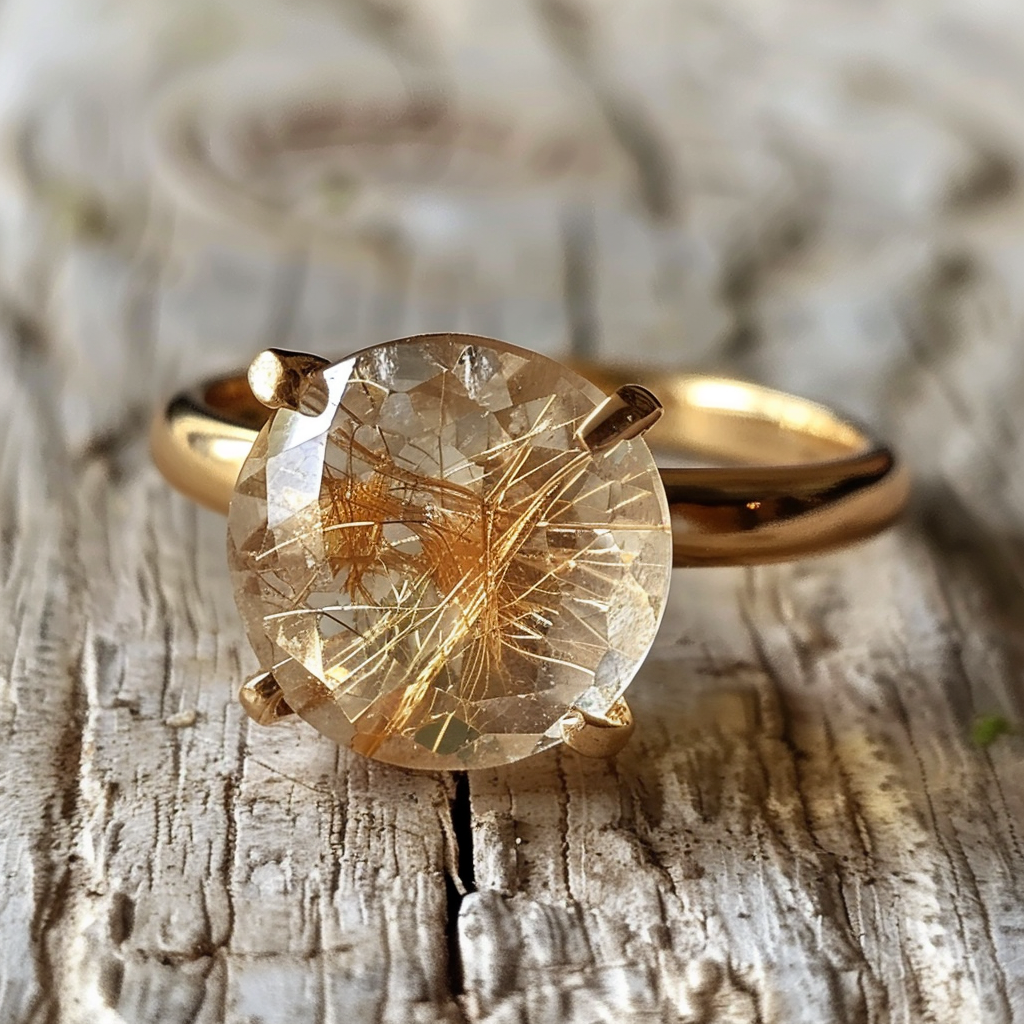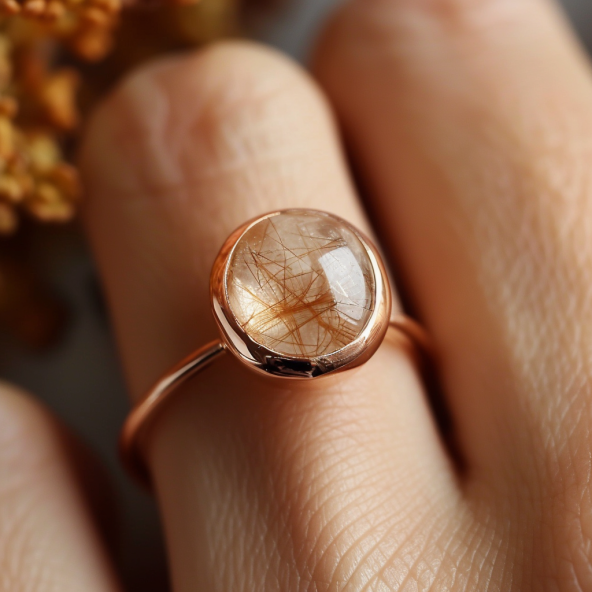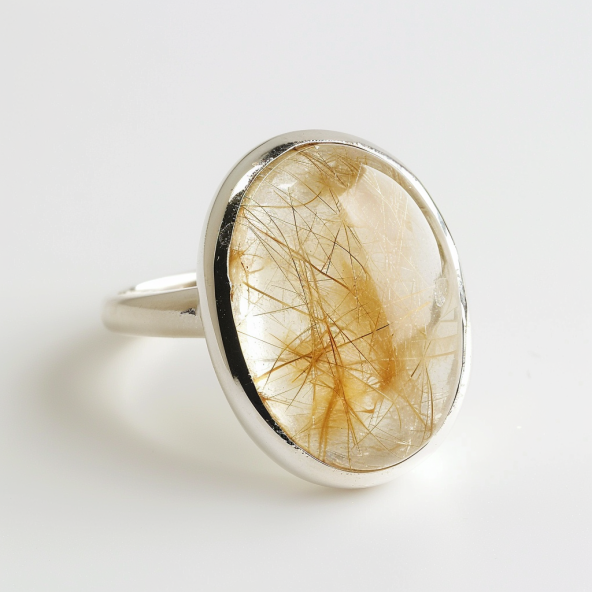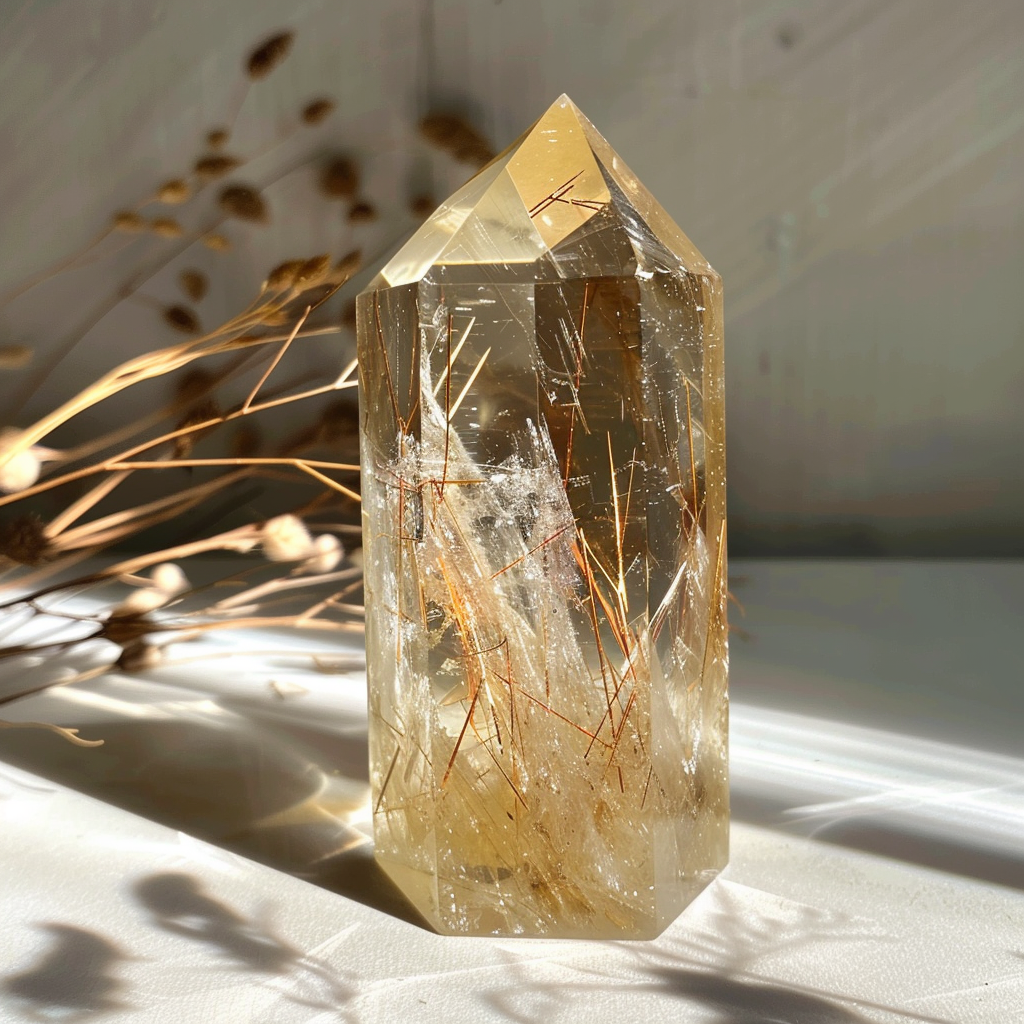Durability and Hardness of Rutilated Quartz
Rutilated quartz, a stunning gemstone with golden or copper-colored needle-like inclusions, has captivated gem enthusiasts and collectors for centuries. Beyond its mesmerizing appearance, it is crucial to understand the durability and hardness of rutilated quartz when deciding on its applications in jewelry. This blog will dive into the physical properties of rutilated quartz, focusing on its durability, hardness, and what makes it an excellent choice for various types of jewelry.

Understanding the Hardness of Rutilated Quartz
When discussing the durability and hardness of rutilated quartz, it is important to mention the Mohs scale of hardness, which is the standard for gauging a mineral’s resistance to scratching. Rutilated quartz is essentially quartz with needle-like inclusions of rutile. Quartz has a hardness of 7 on the Mohs scale, meaning it is relatively resistant to scratches and harder than many other common materials. This level of hardness makes it suitable for jewelry that can withstand moderate daily wear, such as rings, earrings, pendants, and bracelets.
The rutile inclusions within the quartz are also quite hard, measuring 6 to 6.5 on the Mohs scale, which is slightly softer than the host quartz crystal. However, because these inclusions are housed within the protective matrix of quartz, the overall hardness of rutilated quartz remains consistent at 7. This makes it significantly harder than gemstones like opal and turquoise but softer than sapphires or diamonds.
The Durability of Rutilated Quartz
Durability in gemstones refers to a combination of hardness, toughness, and stability. For rutilated quartz, its durability is influenced not only by its hardness but also by its overall structure. Quartz is known for being a relatively tough mineral, capable of handling everyday impacts, though it is still prone to chipping if struck with considerable force.
The presence of rutile inclusions, which often appear as needle-like or fibrous strands, can sometimes create internal stress points in the stone. While these inclusions add to the beauty and character of the gemstone, they may also contribute to slightly reduced toughness compared to pure quartz. Therefore, care should be taken to protect the gemstone from sharp blows or sudden temperature changes, which could cause internal fractures.
Stability, another critical component of durability, refers to how well a gemstone can withstand exposure to chemicals, heat, and light. The durability of rutilated quartz is good in this regard, as it is stable when exposed to light and most household chemicals. However, it is recommended to avoid prolonged exposure to extreme heat, as this could potentially cause internal fractures or weaken the stone’s structural integrity.

Jewelry Considerations for Rutilated Quartz
The durability and hardness of rutilated quartz make it a versatile gemstone for various jewelry applications. It is a popular choice for pendants, earrings, and statement rings, as it can add an eye-catching element to any jewelry design. However, due to the rutile inclusions and potential vulnerability to chipping, it is advisable to use protective settings for pieces like rings, which are more likely to endure knocks and bumps during wear.
If you plan to set rutilated quartz in a ring, especially one that will be worn daily, choosing a bezel setting can offer added protection compared to prong settings. Earrings and pendants, on the other hand, are less susceptible to impacts, and the gemstone can be showcased without as much concern for damage.

Caring for Rutilated Quartz
To maximize the durability and hardness of rutilated quartz and ensure it remains in pristine condition for years, proper care is essential. Here are some tips for maintaining your rutilated quartz jewelry:
- Avoid Hard Knocks: As with most gemstones, rutilated quartz should be protected from hard impacts, which could cause chipping or cracking.
- Store Properly: Store your rutilated quartz jewelry separately from harder stones like diamonds or sapphires to prevent scratching. Using a soft pouch or a lined jewelry box can help.
- Gentle Cleaning: Clean rutilated quartz with warm, soapy water and a soft brush. Avoid harsh chemicals or ultrasonic cleaners, as these could damage the gemstone or its inclusions.
- Temperature Awareness: Avoid exposing the stone to sudden temperature changes, such as hot water followed by cold, which could lead to fractures.
The Beauty and Durability of Rutilated Quartz

The unique allure of rutilated quartz lies in its captivating inclusions, often described as “angel’s hair” or “Venus’ hair.” These inclusions make each stone entirely unique, adding to its charm and value. The durability and hardness of rutilated quartz make it an attractive option for those seeking a gemstone that combines visual interest with practical wearability.
While rutilated quartz can be used in a variety of jewelry settings, care must be taken to protect it from sharp impacts due to its moderate toughness and the potential internal stress caused by its inclusions. With proper care, this stunning gemstone can maintain its beauty and durability, allowing you to enjoy its golden inclusions for many years.
Conclusion
The durability and hardness of rutilated quartz make it a reliable and visually appealing gemstone choice for jewelry lovers who appreciate something out of the ordinary. With a hardness of 7 on the Mohs scale, it is suitable for various types of jewelry, provided it is treated with care to prevent potential chipping. The presence of rutile inclusions only adds to its beauty, giving each piece a unique character. Whether you’re drawn to the intriguing patterns within the quartz or its robust physical properties, rutilated quartz is undoubtedly a gemstone that offers both beauty and resilience.

Unveil the beauty secrets of this captivating gemstone with our guide on Rutilated Quartz Treatments and Enhancements.
